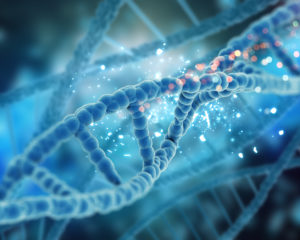As most of you know, I’ve been going through some deep recovery processes this year from two shoulder surgeries. One of my most recent treatments involved stem cell therapy, which is becoming more well known not only for helping combat diseases and help with aging, but also to recover from surgery and injuries. It’s been one of the best treatments I’ve invested in on this journey, so I wanted to share with you its benefits so that if you’re considering a recovery option, you have some great info to decide if you want to make the investment.
What is Stem Cell Therapy?

You can think of stem cells as the foundational cells of all other specialized cells in your body. The raw materials, in a sense, that your body needs to create specific types of cells (aka: liver cells, muscle cells, brain cells, bone cells, etc…). In your body or in a lab, stem cells divide to form more cells called daughter cells.
These daughter cells either become new stem cells by self-renewing or become specialized cells with a more specific function. No other cell in your body has the natural ability to generate new cell types, which is what makes stem cells so special.
When it comes to recovery or treating diseases, stem cells are found to be highly beneficial because they can be guided into becoming specific cells that can be used to regenerate and repair diseased or damaged tissues in people. In essence, they can supply raw cells that are nudged into becoming a specific cell so that your body has more than enough material to repair itself. This is key because sometimes our body does not have enough raw material at all times (this is especially true as we get older), which can slow down healing and repair.
There has been some controversy surrounding stem cells in the past due to how they’re harvested and created. Almost all stem cells come from adult stem cells or stem cells from embryos, although scientists are now looking into other avenues to make stem cells replicate in a lab so that they don’t need to be harvested from either. The main controversy around stem cells harvested from embryos is the way they’re created: in essence, an artificial pregnancy is started in a lab in order to harvest the cells in the early process of embryo development (long before the pregnancy becomes anything more than a group of cells) which leads to the question of whether the process is ethical.
Because of this, many stem cell therapy programs are now relying on voluntarily-donated stem cells from adults. Usually these come from bone marrow, where they are the easiest to find and extract.
Benefits of Stem Cell Therapy for Recovery

The list of benefits of stem cells are long, with research showing it may help with diseases like Parkinson’s, stroke, cancer, and arthritis. However, for the focus of this article, we’ll be honing in on what stem cell therapy can do when it comes to injury or surgery recovery.
1. May Reduce Inflammation
Remember how stem cells can be guided in a lab to become certain types of cells, such as bone or muscle cells? Scientists can now inject Mesenchymal stem cells (MSCs) – types of stem cell that can develop into cartilage and bone – directly into the tissues surrounding your joints. Some studies show that MSCs are able to suppress your immune system to reduce your body’s inflammatory response, making it a promising treatment for chronic inflammation and inflammation in cases of conditions like arthritis. [*]
Combating inflammation plays a big role in tissue repair. While a bit of inflammation is necessary for the healing process, too much can actually damage tissue further and delay healing, which is why using stem cells to keep it under control can be a great option for recovery.
2. Promotes Tissue Repair
The way stem cells help repair tissue has been compared to the way salamanders regenerate limbs, with base cells rushing to the site of injury to build out a new (yet identical) limb. To get highly technical, researchers have found that “switching off” the memory of stem cells, then inserting them into the area of the body that needs repair, can help regenerate the cell types of that area. This happens not only by providing base cells to the area that grow into specific cells, but by also regulating certain proteins in our immune system that promote growth. [*]
Specifically, researchers have also found that stem cells can help release pro-regenerative cytokines (immune system cells) that further help our bodies repair itself. [*]
3. Can Regenerate Muscles
Muscle stem cells, like other types of stem cells, are typically activated when a muscle is injured. However, scientists have found that not all muscle stem cells “perform” adequately. Some cells are perfectly efficient, while others are “okay,” and even more are dysfunctional (aka, not helping at all). This happens more as we age, when stem cells become less efficient and more dysfunctional.
With stem cell therapy, scientists are discovering that if they can improve the performance of these cells, they may be able to help regenerate muscle tissue more efficiently, which leads to a speedier recovery post-op or post-injury.
My Personal Stem Cell Therapy Journey: Road to Recovery
In Episode 3 of my Road to Recovery series, you’ll follow me to Panama for my personal stem cell therapy treatment. I’ll talk more about it and the benefits, and you’ll get to see a live update on shoulder progress and how this and other methods of healing are working.
I appreciate you helping me to understand that stem cells can be used to repair tissues that are damaged or diseased. Are there certain parts of the body that stem cells respond better to? I would imagine that the healing potential would be really high if stem cells can be used on any part of the body that is damaged or diseased.
I never knew that investing in stem cell therapy helps you heal damaged tissues and treat your muscles. I first learned about this therapy in a news article that I binged last night. Now that I understand how it works, I’ll probably suggest this to my uncle who wants to pursue a cycling tournament next year. This way, he wouldn’t have to worry about his muscles failing him.